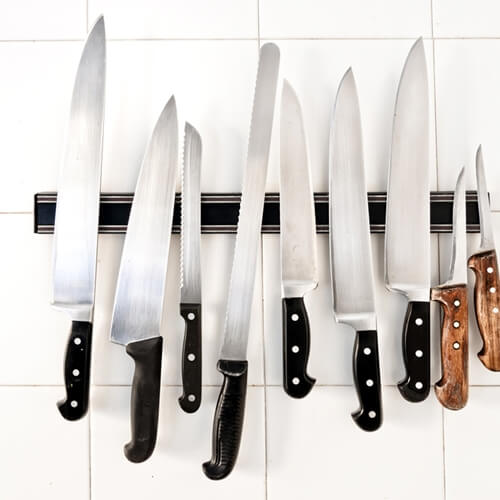The 8 Kitchen Tools All Chefs Need
No two chefs are quite the same. That not only extends to the kind of dishes they enjoy cooking, but also in terms of their overall approach to the kitchen itself. That means the kinds of sauces they might regularly use to their thoughts on how to stir in salt. However, there is at least one aspect where all chefs should have some level of agreement, and that’s in the tools they must all use. While some pieces of cutlery or strainers are mostly optional, there are several utensils that all chefs rely on for everything from barbecue to luscious cakes. Here are just a few of these devices:
Pairing knives: These knives are best for the smaller, more intricate jobs. That includes coring, slicing and dicing any fruits or vegetables.
Serrated knives: In many ways, these are the work horse of a chef’s knives. That’s because serrated knives are used for slicing and cutting everything from breads to larger pieces of fruit. These come in a number of different sizes, and you always want to choose the knife that feels the most comfortable.
Tongs: Given that most chefs have two sturdy hands, tongs aren’t always on on the list of must-have kitchen items. However, a good set of tongs is crucial because it makes it all that much easier to pick up especially hot pots and pans. Just be sure to get a pair of tongs that have nylon heads that won’t scratch your cookware.
Mandoline: Most chefs will cut and peel carrots, cucumbers and potatoes with a knife. However, the mandoline is a great tool, allowing you to crinkle cut, slice or waffle cut most vegetables. Because it’s easy to assemble and take apart, the mandoline is a breeze to clean up.
Steel rod: Depending upon how much you use your knives, they can go dull with just a matter of months. In order to keep your knives especially effective, having a steel rod on hand is a great way to sharpen your knives before each use.
Candy thermometer: Thermometers are an important part of almost any kitchen, but you want one that is doubly effective. Try to opt for the candy thermometer if possible. Not only does it read higher temperatures – up to 400 degrees Fahrenheit – but these specific thermometers are often far more accurate than meat thermometers.
Cutting board: This seems likely a fairly obvious option, but it’s not one enough chefs give the proper consideration. You want a cutting board that is not only stable but that can handle the extended blows from a number of knives. That’s why many chefs now rely on bamboo boards as opposed to those made of plastic.
Kitchen scale: Not every chef will weight their ingredients, instead relying on a kind of guesswork or intuition. However, an electronic kitchen scale is an easy way to ensure that you have the right amount of various spices, herbs, sugar, salt or other components. Plus, these tools are small enough not to eat up a lot of counter space.
These tools are vital for any chef enrolled in culinary academy.


